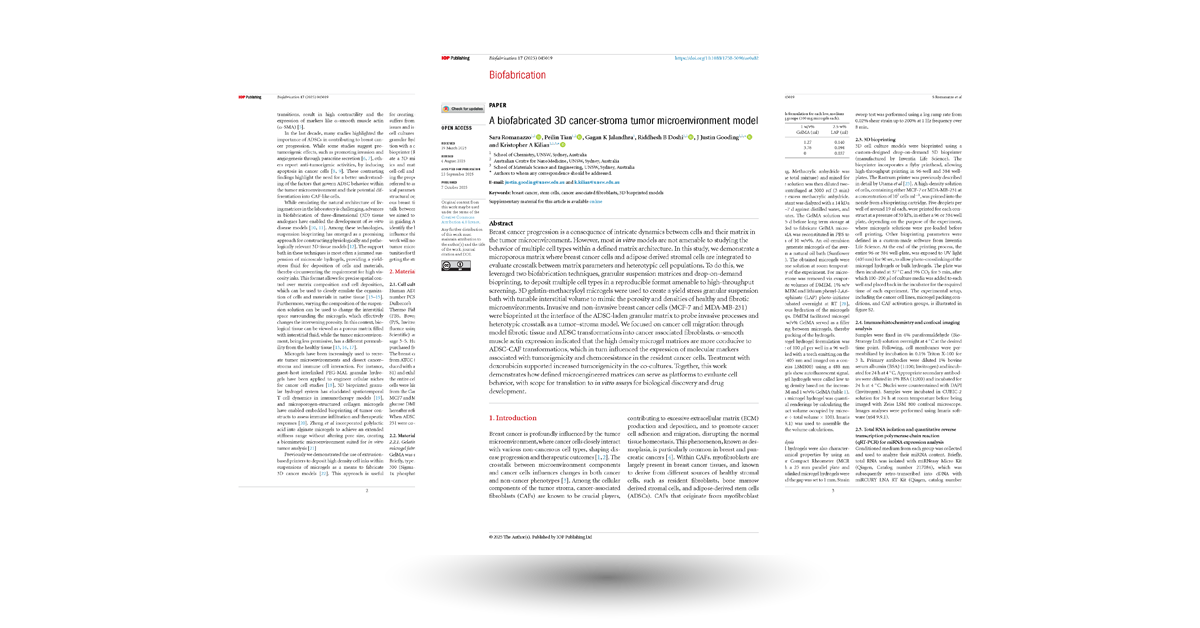
A biofabricated 3D cancer-stroma tumor microenvironment model
Abstract
Breast cancer progression is a consequence of intricate dynamics between cells and their matrix in the tumor microenvironment. However, mostin vitromodels are not amenable to studying the behavior of multiple cell types within a defined matrix architecture. In this study, we demonstrate a microporous matrix where breast cancer cells and adipose derived stromal cells are integrated to evaluate crosstalk between matrix parameters and heterotypic cell populations. To do this, we leveraged two biofabrication techniques, granular suspension matrices and drop-on-demand bioprinting, to deposit multiple cell types in a reproducible format amenable to high-throughput screening. 3D gelatin-methacryloyl microgels were used to create a yield stress granular suspension bath with tunable interstitial volume to mimic the porosity and densities of healthy and fibrotic microenvironments. Invasive and non-invasive breast cancer cells (MCF-7 and MDA-MB-231) were bioprinted at the interface of the ADSC-laden granular matrix to probe invasive processes and heterotypic crosstalk as a tumor-stroma model. We focused on cancer cell migration through model fibrotic tissue and ADSC transformations into cancer associated fibroblasts.α-smooth muscle actin expression indicated that the high density microgel matrices are more conducive to ADSC-CAF transformations, which in turn influenced the expression of molecular markers associated with tumorigenicity and chemoresistance in the resident cancer cells. Treatment with doxorubicin supported increased tumorigenicity in the co-cultures. Together, this work demonstrates how defined microengineered matrices can serve as platforms to evaluate cell behavior, with scope for translation toin vitroassays for biological discovery and drug development.